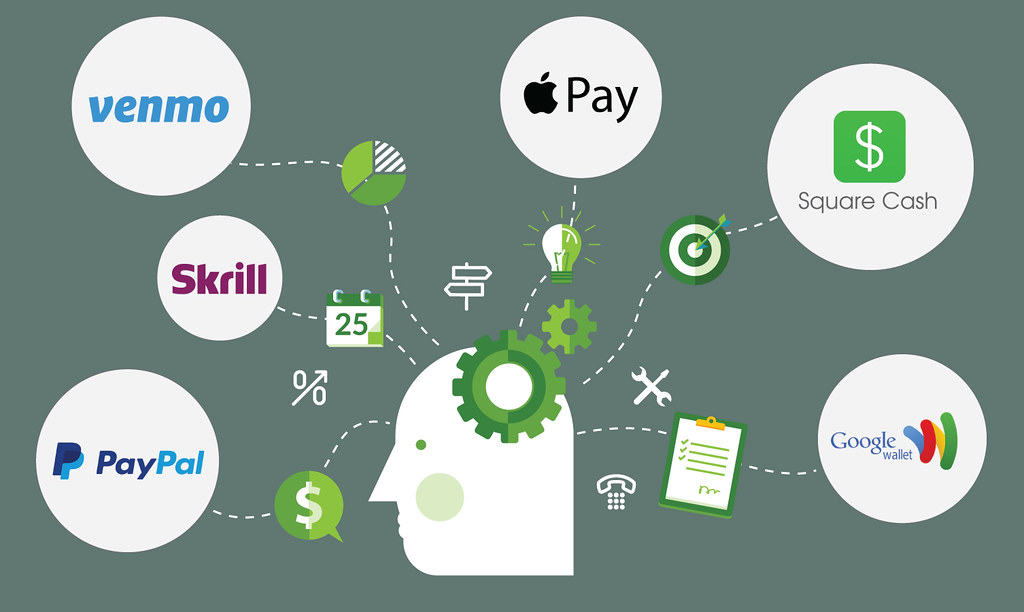
Embarking on the journey toward a secure and comfortable retirement can feel like a monumental task, but with the right strategies, your employer-sponsored 401(k) plan can become a powerful engine for wealth creation. These plans are more than just a place to park your money; they offer distinct advantages like tax-deferred growth and the incredible benefit of long-term compounding, which can significantly amplify your savings over decades. Understanding how to harness these features is crucial for anyone looking to build a substantial nest egg.
Many of us simply set up our initial contributions and then let our 401(k) accounts hum along in the background, but this passive approach often means missing out on valuable opportunities. Maximizing your 401(k) isn’t about complex financial acrobatics; it’s about making informed, practical decisions that can have a profound impact on your financial future. From understanding the nuances of employer matching to strategically managing your investments, every step you take can contribute to a stronger retirement foundation.
This guide is designed to empower you with clear, actionable advice, breaking down potentially complex financial concepts into easy-to-understand strategies. We’ll walk through the cornerstone methods to ensure you’re not just saving, but truly maximizing every dollar in your 401(k), making it work as hard as possible for your long-term security. Let’s dive into the essential steps that can transform your retirement outlook.

1. **Claim Your Full Employer 401(k) Match**One of the most compelling reasons to participate in an employer-sponsored 401(k) plan is the opportunity to receive an employer match. This isn’t just a perk; it’s essentially free money that instantly boosts your savings, providing an immediate and often substantial return on your investment. As David Freisner, CEO at Konza Global Wealth Group, succinctly put it, “There are not many opportunities to instantly realize a 100% increase in savings than via an employer match.” Failing to contribute at least enough to get the full match means you are literally turning down money that could be yours.
Employers customize their matching formulas, which can vary significantly. Some companies offer a “full match,” also known as dollar-for-dollar matching, where they contribute 100% of what you put in, up to a certain percentage of your salary. For instance, if your employer matches 100% up to 4% of your salary, and you earn $100,000, contributing $4,000 means your employer adds another $4,000. Others might offer a “partial match,” such as 50% of your contributions up to 6% of your salary. In this scenario, if you contribute $6,000 on a $100,000 salary, your employer would contribute $3,000. Some even use a combination, matching 100% for an initial percentage and then 50% for an additional percentage.
The key takeaway, regardless of the formula, is to determine precisely how much you need to contribute to receive the maximum employer match. Your organization’s plan documents or HR department can provide these specifics. Once you know the threshold, make it a non-negotiable part of your financial planning to meet or exceed that contribution level. Fidelity, for example, strongly advocates for contributing at least enough to receive the full match, recognizing it as a foundational step toward solid retirement savings. This strategy doubles your initial investment right away and sets a strong precedent for consistent saving.
Read more about: Decoding Your Wealth: What the Average 60-Something American Has in Net Worth and How You Compare

2. **Increase Your 401(k) Contributions Beyond the Minimum**While securing your employer’s 401(k) match is a crucial first step, it’s rarely sufficient to achieve a truly comfortable retirement. Many employers automatically enroll new workers into their 401(k) plans at a relatively low contribution rate, often around 3%. However, as Bill London, an estate attorney and founder of Kimura London & White, notes, “that amount is rarely enough to retire comfortably.” To build a robust nest egg, a more proactive approach to your contribution rate is essential.
Financial experts generally recommend aiming to save at least 10% to 15% of your gross income annually for retirement, and this figure includes any employer contributions. If your employer provides a 4% match, you would ideally contribute an additional 6% to 11% yourself to reach this target range. This consistent increase in savings, especially as your income grows, significantly accelerates the accumulation of your retirement funds and enhances your long-term financial security.
If committing to a higher percentage right away seems daunting, start small. London suggests considering increasing your contributions annually or whenever you receive a raise. Even a modest bump of 1% each year can make a substantial difference over time. For someone earning $60,000 annually, a 1% increase equates to just $50 more per month, a manageable adjustment that compounds into significant savings. London further emphasizes the broader benefits, stating that this practice “builds an enhanced economic foundation that can support both your retirement requirements and any legacy you would like to leave for your heirs.” This makes increasing contributions a strategic move not just for your present, but also for future generations.
Read more about: Unmasking the Truth: 10 Costly Retirement Lies You Need to Stop Believing for a Secure Future

3. **Understand and Stay for Your Vesting Schedule**While your own contributions to a 401(k) are always 100% yours, the money contributed by your employer, including matching funds and profit-sharing, often comes with a vesting schedule. Understanding this schedule is absolutely critical, particularly if you anticipate changing jobs. Vesting refers to the period you must remain employed with a company before you fully own the employer-contributed funds. Leaving before you are fully vested can mean forfeiting a portion, or even all, of your employer’s contributions.
Vesting schedules typically come in two main forms: gradual or cliff vesting. In a gradual vesting schedule, you gain ownership of a percentage of your employer’s contributions over time. For example, a five-year gradual schedule might grant you 20% ownership after year one, 40% after year two, and so on, until you reach 100% after five years. Cliff vesting, on the other hand, means you gain 100% ownership all at once after a specified period, such as three years of employment. If you depart before that cliff date, you forfeit everything.
The financial implications of leaving a job before your 401(k) funds are vested can be significant. Bill London highlights this risk, noting, “Leaving early instead of waiting for vesting causes forfeiture of some or all employer funds. This is money that might have earned interest for 20 years or become part of the total amount reserved for beneficiaries.” Such a decision, he adds, “may cost you tens of thousands of dollars over time.” Moreover, in the realm of estate planning, even seemingly “relatively small decisions may have a lasting impact.” Before making any job transition, always consult your plan documents or HR to understand your specific vesting rules and avoid unnecessary financial setbacks. It’s also worth noting that Highly Compensated Employees (HCEs), those earning above a certain annual threshold (e.g., $155,000 in 2023) or owning over 5% of a company, may face specific restrictions on employer matching, so familiarize yourself with company policies.
Read more about: 10 Critical Car Maintenance Tasks You Can’t Afford to Ignore

4. **Strategize Your Tax Breaks with Traditional vs. Roth 401(k)s**Maximizing your 401(k) involves not only how much you contribute but also how you leverage the tax advantages offered by different account types. The choice between a traditional 401(k) and a Roth 401(k) is a key decision that impacts your tax situation both today and in retirement. A traditional 401(k) is funded with pre-tax dollars, meaning your contributions reduce your current taxable income. The money then grows tax-deferred, and you pay income taxes on withdrawals in retirement. For 2025, employees under 50 can contribute up to $23,500, with an additional $7,500 catch-up contribution for those age 50 and older (or $11,250 for those 60-63).
Conversely, a Roth 401(k) is funded with after-tax money. While you don’t receive an upfront tax deduction for your contributions, the significant benefit is that qualified withdrawals in retirement are entirely tax-free. This feature makes a Roth 401(k) an excellent component of a tax-diversification strategy, particularly for those who anticipate being in a higher tax bracket during their retirement years. As Bill London points out, “This benefit becomes especially valuable for those expecting higher tax rates in retirement.”
Beyond personal retirement income, Roth assets offer compelling estate planning advantages. London notes that “Roth assets can be passed to beneficiaries without triggering immediate income tax obligations, thus making them a critical element of multigenerational estate planning.” While your employer can match your Roth contributions, these matching funds typically get deposited into a separate traditional account and are generally pre-tax. However, new legislation under the SECURE Act 2.0 now allows for post-tax matching contributions, though it remains at the employer’s discretion to offer them. The underlying principle, as Douglas Ornstein, director and wealth management coach at TIAA, states, is that “Tax breaks are like the government’s way of telling us all what is important for society.” Utilizing these incentives, whether pre-tax or post-tax, can significantly enhance your financial future.

5. **Avoid Early 401(k) Withdrawals and Penalties**Life can throw unexpected financial curveballs, and when cash is tight, dipping into your 401(k) might seem like an appealing solution. However, resisting the temptation to take early withdrawals from your retirement account is a critical step in preserving your long-term financial security. The costs associated with early withdrawals are steep and can significantly derail your retirement plans, making it an option that should be avoided whenever possible.
For individuals under the age of 59 1/2, an early withdrawal comes with a double penalty. Not only will you owe ordinary income taxes on the amount withdrawn, but you’ll also face an additional 10% penalty from the IRS. This combination dramatically reduces the amount of money you actually receive, making it an inefficient way to access funds. More importantly, it profoundly impacts your future wealth. Each dollar withdrawn early is a dollar that loses decades of potential tax-deferred growth and compounding, drastically shrinking your nest egg over time.
Bill London emphasizes the long-term ramifications, stating that an early withdrawal “undercuts your long-term financial security.” He further highlights its impact on legacy planning: “In planning your estate, the preservation of retirement assets leaves you in control of more assets, thus allowing you to cover future needs and increase the size of your legacy.” The foresight to protect these assets ensures that you maintain control over your financial resources throughout your life and can provide for your beneficiaries as intended. Therefore, exploring all other financial avenues before considering an early 401(k) withdrawal is always the wisest course of action.
Read more about: The Mortgage vs. Investing Dilemma: How to Decide What’s Best for Your Extra Money

6. **Execute Fee-Free 401(k) Rollovers When Changing Jobs**Navigating your 401(k) when you leave a job can be a source of confusion for many investors. The process of moving your funds from an old employer’s plan to a new one, or into an Individual Retirement Account (IRA), is known as a rollover. It’s crucial to understand that a rollover is distinctly different from cashing out your 401(k), which, as discussed, can trigger significant taxation and penalties. The good news is that most companies offer the option to roll over your funds without incurring fees or penalties.
As Douglas Ornstein, director and wealth management coach at TIAA, confirms, “Most companies allow you to roll over without any fees or penalties to another retirement account.” This means you can seamlessly transfer your accumulated retirement savings, maintaining their tax-advantaged status. Brokerages that offer IRA accounts often provide this rollover service at no charge, making the transition even smoother. A direct rollover, where funds move directly from one plan administrator to another, is generally the safest way to ensure no taxes or penalties are mistakenly applied.
When considering a rollover, you typically have a few options. You can roll your old 401(k) into your new employer’s 401(k) plan, if permitted, or transfer it into an IRA (either a traditional IRA or a Roth IRA, depending on your tax strategy). Moving funds into an IRA can sometimes offer a wider array of investment choices and potentially lower fees than a workplace plan. Understanding these options and executing a proper rollover ensures your retirement savings continue to grow unimpeded, preserving the hard-earned tax benefits you’ve cultivated over your employment.

7. **Minimize Investment Fees Within Your 401(k) Plan**While diligently contributing to your 401(k) is paramount, the long-term growth of your nest egg can be significantly impacted by the fees associated with your chosen investments. Many 401(k) plans offer a selection of mutual funds or exchange-traded funds (ETFs), each with its own “expense ratio” – an annual fee charged as a percentage of your investment. These seemingly small percentages can quietly erode a substantial portion of your returns over decades, highlighting the importance of scrutinizing these costs.
Actively managed mutual funds, where a fund manager attempts to outperform the market, typically come with higher expense ratios compared to passively managed index funds. Index funds, by contrast, simply aim to mimic the performance of a specific market index, like the S&P 500. Their simpler strategy often translates to significantly lower fees. Marcus Sturdivant Sr., managing member of ABC Squared, advises, “Find investment options with low costs. Stocks do not have fees, but ETFs, mutual funds and the custodians who hold your funds do.” His simple but profound advice? “Read the fine print.”
Opting for low-cost investment options within your 401(k) can make a tangible difference in your accumulated wealth at retirement. For example, investing in an S&P 500 index fund provides broad diversification across 500 of the largest U.S. companies, often at a fraction of the cost of actively managed alternatives. These funds offer the potential for strong returns over time without the drag of excessive fees. Regularly reviewing your 401(k) investment choices and their associated expense ratios is a smart habit to ensure more of your money is working for you, rather than being siphoned off by unnecessary costs. This small effort can lead to thousands, if not tens of thousands, of dollars more in your retirement account over the long haul.
Now that you’ve mastered the foundational elements of your 401(k), it’s time to elevate your strategy. The path to a truly robust retirement nest egg involves not just diligent saving, but also smart, diversified investment practices and a keen understanding of advanced financial tools. This second section will guide you through expanding your wealth, ensuring your retirement savings are not only growing but are also resilient and optimized for your long-term security.
Read more about: Unmasking the Truth: 10 Costly Retirement Lies You Need to Stop Believing for a Secure Future

8. **Diversify Your Investment Portfolio Broadly**While minimizing fees within your 401(k) is essential, *what* you invest in is equally critical for long-term growth and risk management. Many American investors exhibit a “home country bias,” tending to invest heavily in domestic stocks. While this focus on large-cap U.S. stocks has often yielded strong returns, relying too heavily on any single asset class, sector, or geography can expose your portfolio to unnecessary risk. A well-diversified portfolio is like a strong fortress, built to withstand various market conditions.
Effective diversification means spreading your investments across a variety of categories. This includes different asset classes, such as stocks, bonds, and even real estate, as well as various investment styles, company sizes, and geographical regions. Douglas Ornstein, director and wealth management coach at TIAA, emphasizes that “Diversification is more important now than ever,” highlighting the need to diversify across “asset classes, investment style, tax treatment, geography and company size.” This strategic allocation helps to mitigate risk, as underperformance in one area can be offset by stronger performance in another. For instance, while U.S. stocks have performed well historically, the context notes that in 2025, international ETFs, such as the iShares MSCI EAFE ETF (ticker: EFA), are outperforming.
A common misconception among investors is that simply holding funds at different brokerages constitutes diversification. Ornstein clarifies that “Diversification happens within your account, but diversifying across investment firms doesn’t accomplish the same thing since your investments won’t be coordinated with each other.” True diversification requires a holistic approach, ensuring your entire portfolio acts like a “well-balanced diet,” as Ornstein puts it, with “all things in moderation, with a bigger focus on the healthiest investments.” By consciously broadening your investment portfolio, you manage risk more effectively and enhance the potential for stable, long-term returns across your entire retirement savings.
Read more about: Investment Guide: The 14 Classic Cars That Have Consistently Appreciated by Over 50% in the Last Decade

9. **Understand and Plan for Required Minimum Distributions (RMDs)**As you approach and enter retirement, a new set of rules comes into play regarding your traditional 401(k)s and IRAs: Required Minimum Distributions, or RMDs. These are mandatory withdrawals that retirement savers must begin taking when they reach age 73. It’s not just a suggestion; it’s an IRS rule, and failing to comply can lead to significant penalties that can severely impact your retirement savings.
The penalty for not taking your RMDs on time can be steep, so integrating RMD planning into your overall financial strategy is crucial. Bill London, an estate attorney, underscores this point, stating that “Failure to comply can lead to steep penalties.” Beyond the immediate financial penalty, neglecting RMDs can also harm your estate planning objectives. Untimely distributions may subject your heirs to higher tax rates and reduce the total amount left for them, contradicting your wishes for a lasting legacy.
London advises that “it is important to incorporate the RMD into an overall financial and estate plan in order to minimize taxes and protect the person’s inheritance.” This proactive planning ensures that your withdrawals are strategically managed, aligning with your financial goals while adhering to IRS regulations. By understanding when RMDs begin and how they impact your tax situation and estate, you can prevent unnecessary financial setbacks and ensure your retirement assets are distributed efficiently and according to your plan.
Read more about: Unmasking the Truth: 10 Costly Retirement Lies You Need to Stop Believing for a Secure Future

10. **Leverage Health Savings Accounts (HSAs) for Future Medical Costs**Beyond traditional retirement accounts, a Health Savings Account (HSA) stands out as a powerful, tax-advantaged tool, particularly for saving for future health care costs in retirement. If you are enrolled in an HSA-eligible high-deductible health plan, this account offers a triple tax benefit: your contributions are tax-deductible, your earnings grow tax-free, and qualified withdrawals for medical expenses are also tax-free. This unique combination makes HSAs an incredibly efficient vehicle for long-term savings.
HSAs are more flexible than many realize. You can typically split your contributions, keeping some in cash for immediate medical expenses and investing the rest for long-term growth. Investing the money within your HSA allows it to potentially grow over time, similar to a retirement account. The contribution limits are substantial: for 2024, it’s $4,150 for individual coverage and $8,300 for family coverage, increasing slightly to $4,300 and $8,550, respectively, for 2025. Those aged 55 and older can also contribute an additional $1,000 as a catch-up contribution. Maximizing these contributions means you’re building a dedicated fund for what can be significant expenses in retirement.
Given that women, for example, often face higher health care costs and a greater likelihood of needing long-term care in retirement, maximizing HSA contributions is an especially smart move. This dedicated savings mechanism ensures that medical expenses, which can be unpredictable and substantial, don’t deplete your other retirement funds. By consistently contributing and investing your HSA funds, you create a robust safety net, safeguarding your overall financial security and providing peace of mind for future health care needs.

11. **Supplement Your Savings with Individual Retirement Accounts (IRAs)**Even after maximizing your 401(k) contributions, you might find yourself with additional funds you wish to set aside for retirement. This is where Individual Retirement Accounts (IRAs) come into play as a crucial supplementary savings option. Unlike employer-sponsored plans, IRAs are not tied to your workplace, offering flexibility and control over your investments. They allow you to continue building your retirement nest egg beyond your 401(k) limits, enhancing your overall financial security.
There are several types of IRAs, each with distinct benefits and requirements. You can contribute to a traditional IRA, which offers tax-deductible contributions in some cases and tax-deferred growth, or a Roth IRA, where contributions are made with after-tax money but qualified withdrawals in retirement are entirely tax-free. Additionally, a rollover IRA provides a seamless way to transfer funds from old workplace plans, but it also allows for new contributions once established. For 2024, you can contribute up to $7,000 to an IRA, or $8,000 if you are age 50 or older, provided your combined contributions don’t exceed your earned income.
The key advantage of IRAs is their ability to complement your 401(k), providing another layer of tax-advantaged growth. You can contribute to both a 401(k) and an IRA in the same year, provided you meet the income eligibility requirements for certain IRA types. This strategy offers greater tax diversification and can provide a wider array of investment choices compared to some workplace plans. By utilizing IRAs, you can amplify your retirement savings, tailoring your approach to best suit your personal financial situation and goals.
Read more about: Your Personalized Roadmap to Retirement: A Kiplinger Guide to Financial Independence

12. **Consider After-Tax 401(k) Contributions**For those who have already maximized their pre-tax or Roth 401(k) contributions and still wish to save more within their employer’s plan, after-tax 401(k) contributions offer an advanced strategy. This option allows you to contribute beyond the standard individual employee limits—which are $23,500 for 2025, or $30,500 for those 50 and older—up to the much higher combined employee and employer limit. For 2024, this combined limit can reach $69,000, or $76,500 for those 50 and older.
Not all employer plans offer after-tax contributions, so it’s essential to check your plan documents or consult with your HR department. If available, this pathway can significantly boost your retirement savings, particularly for high-income earners. The funds are contributed after taxes, but they still grow tax-deferred within the 401(k) account. One of the most compelling strategies associated with after-tax 401(k) contributions is the ability to convert this money into a Roth 401(k) after it’s been contributed, a process sometimes referred to as a “mega backdoor Roth conversion.”
A distinct advantage of after-tax 401(k) contributions is their accessibility. Unlike pre-tax or Roth contributions, after-tax contributions can be withdrawn without taxes or penalties at any time, offering a level of liquidity not typically found in other retirement savings. However, the growth on these after-tax contributions would still be subject to income tax upon withdrawal unless they are converted to a Roth account. Given the complexity and potential for sophisticated strategies, consulting a financial professional is highly recommended if you are considering this advanced option to ensure it aligns with your overall financial and estate planning goals.
Read more about: Unmasking the Truth: 10 Costly Retirement Lies You Need to Stop Believing for a Secure Future

13. **Utilize Brokerage Accounts for Flexible, Long-Term Investing**Once you’ve maximized contributions to all your tax-advantaged retirement accounts—your 401(k)s, HSAs, and IRAs—you might still have additional funds available for long-term saving. At this point, opening and investing in regular brokerage accounts becomes an excellent next step. While these accounts don’t offer the immediate tax deductions or tax-free growth of retirement vehicles, they provide unparalleled flexibility and continued potential for wealth accumulation.
Brokerage accounts are incredibly versatile; there are no limits on how much you can invest, allowing you to continue growing your wealth without caps. They also offer flexible access to your money, meaning you can withdraw funds at any time without the age restrictions or penalties associated with retirement accounts. While withdrawals of gains are typically subject to capital gains taxes, these tax rates can often be lower than ordinary income tax rates, especially for long-term capital gains, which may be taxed at no more than 15%. This can be a significant advantage compared to traditional IRA withdrawals, which are taxed at your regular income tax rate.
Deciding how and where to invest within a brokerage account often begins with a fundamental choice: do you want to manage your investments yourself, or would you prefer professional assistance? Many brokerages offer a wide range of professionally managed options, some even with low advisory fees or no minimum balances, catering to various investor needs. Regardless of your approach, it’s crucial to diversify your investments within these accounts, ensuring a mix of assets like stocks, bonds, and real estate. This strategic diversification, combined with the inherent flexibility of brokerage accounts, empowers you to keep building towards your dreams, providing accessible capital for both expected and unexpected future needs, long after your retirement accounts are fully optimized.
Read more about: The Path to Millionaire Status: Careers, Habits, and Strategic Planning
Embarking on the journey to a comfortable retirement is a marathon, not a sprint, and every strategic decision you make contributes to the strength of your financial future. From claiming your employer match to diversifying your assets and leveraging every available tax-advantaged account, each step is a building block in your personal wealth fortress. By diligently applying these strategies, you’re not just saving money; you’re actively constructing a legacy, ensuring not only your own financial security but also the potential to support future generations. Take control, stay informed, and watch your retirement dreams transform into reality.



